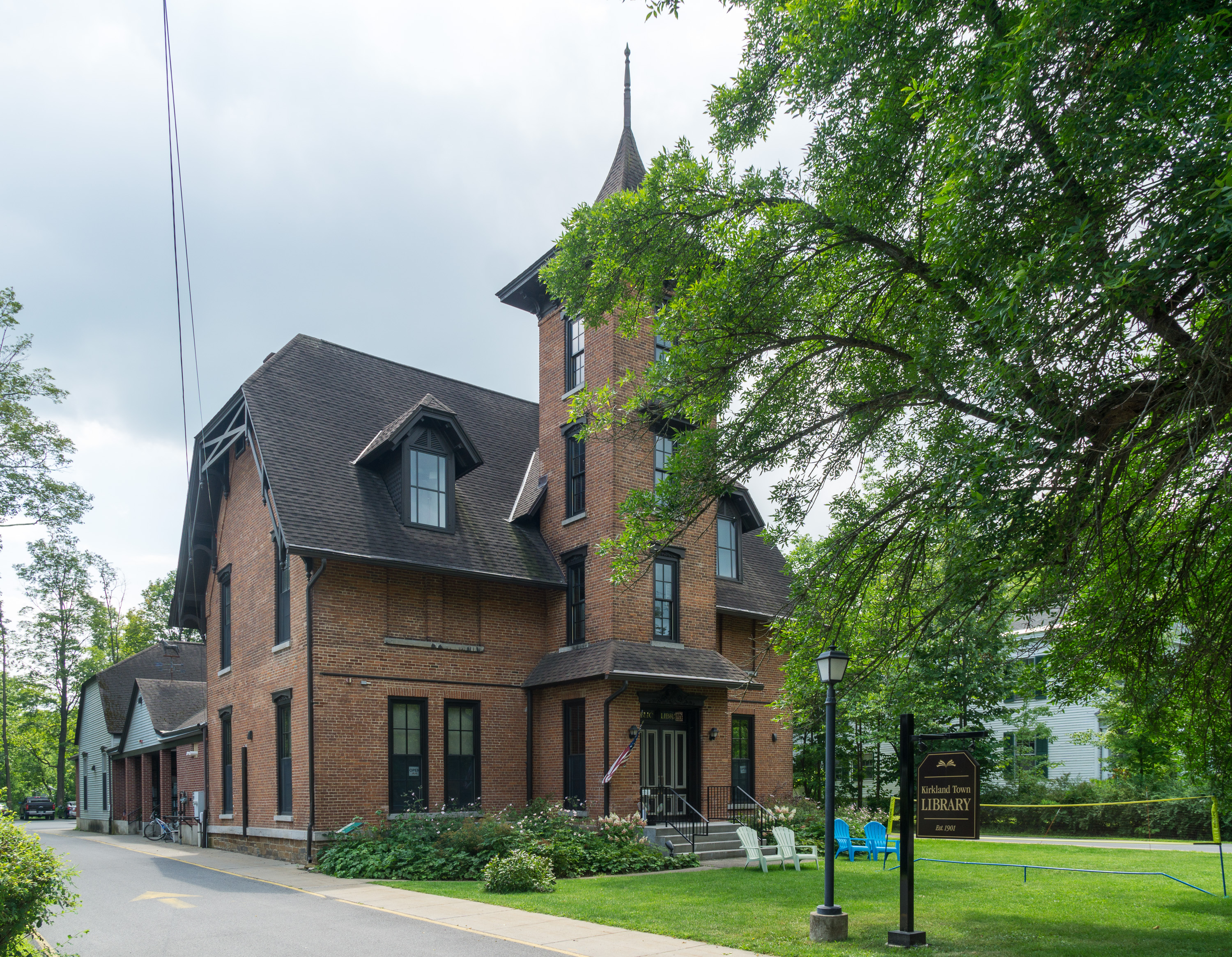Kirkland, New York on:
[Wikipedia]
[Google]
[Amazon]

 Kirkland is a
Kirkland is a
Town of Kirkland, NY
Chamber of Commerce information
{{authority control Utica–Rome metropolitan area Towns in Oneida County, New York

 Kirkland is a
Kirkland is a town
A town is a human settlement. Towns are generally larger than villages and smaller than cities, though the criteria to distinguish between them vary considerably in different parts of the world.
Origin and use
The word "town" shares an ori ...
in Oneida County, New York
Oneida County is a county in the state of New York, United States. As of the 2020 census, the population was 232,125. The county seat is Utica. The name is in honor of the Oneida, one of the Five Nations of the Iroquois League or ''Haudenos ...
, United States. The population was 10,315 at the 2010 census. The town is named after Samuel Kirkland, a missionary among the Oneidas.
The Town of Kirkland is southwest of Utica. In 1829, part of Kirkland was used to form the newer Town of Marshall.
Hamilton College
Hamilton College is a private liberal arts college in Clinton, Oneida County, New York. It was founded as Hamilton-Oneida Academy in 1793 and was chartered as Hamilton College in 1812 in honor of inaugural trustee Alexander Hamilton, following ...
is located in the western part of the town.
History
The first settlement occurred around 1787 near the present village of Clinton. The Town of Kirkland was established in 1827 from the Town of Paris. The land of the town belonged to the Kirkland Patent, Brothertown Patent, and Coxe Patent. The Rev. Asahel Norton Homestead was listed on theNational Register of Historic Places
The National Register of Historic Places (NRHP) is the United States federal government's official list of districts, sites, buildings, structures and objects deemed worthy of preservation for their historical significance or "great artistic ...
in 1985.
Geography
According to theUnited States Census Bureau
The United States Census Bureau (USCB), officially the Bureau of the Census, is a principal agency of the U.S. Federal Statistical System, responsible for producing data about the American people and economy. The Census Bureau is part of t ...
, the town has a total area of , of which is land and (0.21%) is water.
The Oriskany Creek flows through the town.
Demographics
At the 2000 census there were 10,138 people, 3,419 households, and 2,229 families living in the town. The population density was 300.0 people per square mile (115.8/km). There were 3,591 housing units at an average density of 106.3 per square mile (41.0/km). Theracial makeup
A race is a categorization of humans based on shared physical or social qualities into groups generally viewed as distinct within a given society. The term came into common usage during the 1500s, when it was used to refer to groups of variou ...
of the town was 96.32% White, 1.20% African American, 0.07% Native American, 1.21% Asian, 0.03% Pacific Islander, 0.27% from other races, and 0.90% from two or more races. Hispanic or Latino of any race were 1.32%.
Of the 3,419 households 30.4% had children under the age of 18 living with them, 53.1% were married couples living together, 8.9% had a female householder with no husband present, and 34.8% were non-families. 29.4% of households were one person and 12.6% were one person aged 65 or older. The average household size was 2.39 and the average family size was 3.00.
The age distribution was 20.0% under the age of 18, 20.9% from 18 to 24, 21.2% from 25 to 44, 22.2% from 45 to 64, and 15.7% 65 or older. The median age was 36 years. For every 100 females, there were 91.4 males. For every 100 females age 18 and over, there were 86.8 males.
The median household income was $45,875 and the median family income was $58,958. Males had a median income of $40,058 versus $27,265 for females. The per capita income for the town was $21,164. About 3.9% of families and 7.7% of the population were below the poverty line
The poverty threshold, poverty limit, poverty line or breadline is the minimum level of income deemed adequate in a particular country. The poverty line is usually calculated by estimating the total cost of one year's worth of necessities for t ...
, including 9.6% of those under age 18 and 4.9% of those age 65 or over.
Communities and locations in Kirkland
*Chuckery Corners – A hamlet in the eastern part of the town onNY 12
New York State Route 12 (NY 12) is a state highway extending for through central and northern New York in the United States. The southern terminus of the route is at U.S. Route 11 (US 11) in the town of Chenango (just nor ...
. A cheese factory was set up here in 1858.
* Christmas Knob – An elevation located north of Clinton.
* Clark Mills – A hamlet in the northeastern part of the town.
* Clinton – The Village of Clinton.
* College Hill – A summit located west of Clinton.
* Crow Hill – A summit located east of Chuckery Corners.
*Farmers Mills – A hamlet south of Clinton Village and Franklin Springs.
*Franklin Springs – A hamlet south of Clinton Village. It was formerly the "Franklin Iron Works" during the hamlet's iron smelting period. The Franklin Iron Works went into operation in 1852.Gridley, p. 170-174 A cheese factory opened here in 1866.Gridley, p. 177
* Kirkland – A hamlet, formerly called "Manchester," near the western town line on New York State Route 5 (NY 5). The clay in this area was formerly used for pottery.
* Prospect Hill – An elevation located west of Franklin Springs.
* The Knob – An elevation located in Clinton.
References
External links
Town of Kirkland, NY
Chamber of Commerce information
{{authority control Utica–Rome metropolitan area Towns in Oneida County, New York